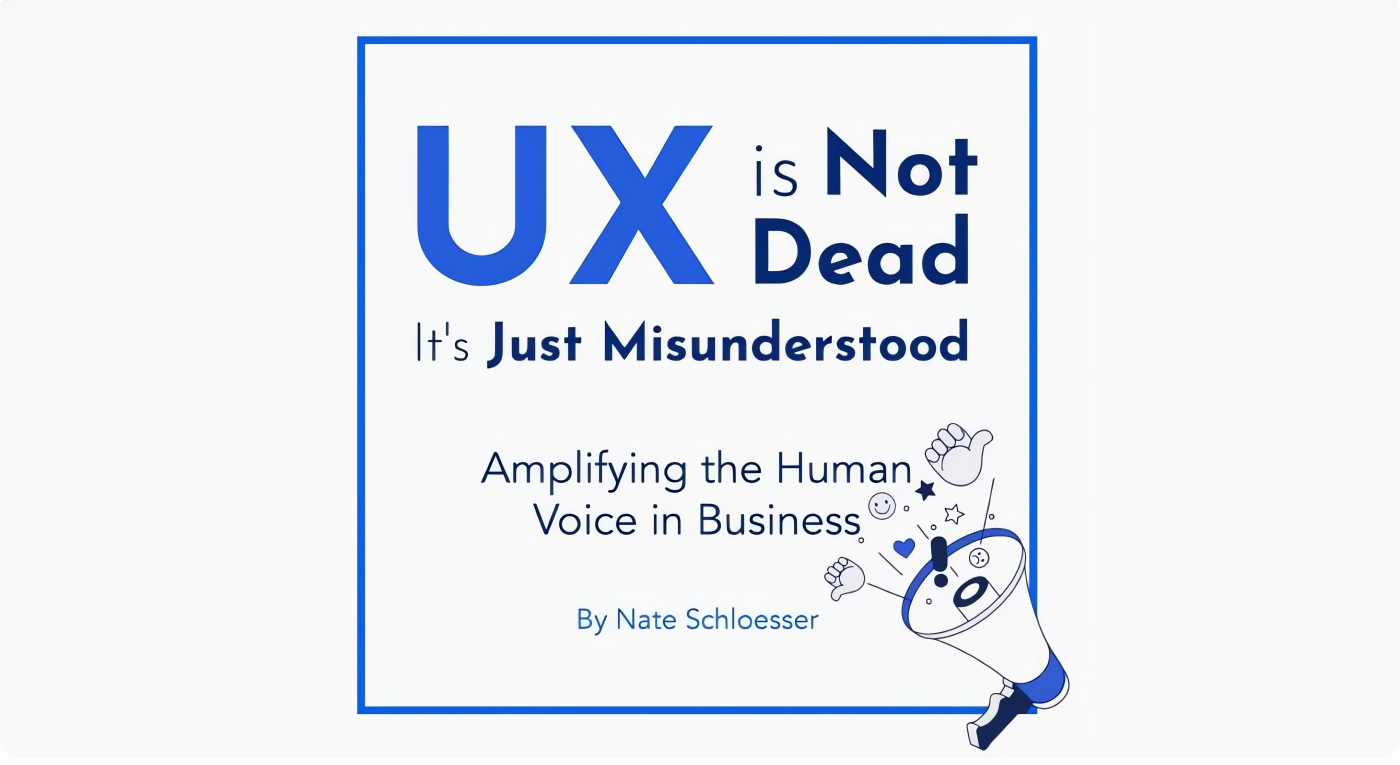In the bustling marketplace of business, there’s a saying we often forget: “The customer is always right.” But have we ever paused to ask, who is this ‘customer’? They’re not just a faceless statistic or a demographic on a chart. They’re people — complex, unique, and wonderfully human.
As we race to hit targets and increase profits, we risk losing sight of this simple truth: every ‘user’ or ‘customer’ is a real person with their own needs, desires, and dreams. Amidst all the corporate hustle, one critical question often gets overlooked — who actually advocates for these human beings?
Imagine the business landscape as a vibrant marketplace. Each department — Sales, Tech, Marketing — is an enthusiastic vendor, each selling their own wares. But in this kaleidoscope of commerce, the user often stands alone, silently asking, “Who will guide me through this maze?”
As we delve into the urgent need for user advocacy, let’s remember our true mission. As the great adman Bill Bernbach once said, we’re here to understand people, then the business. Because without people, there is no business. It’s high time we started dancing with the ones who brought us here.
The Gap in Current Business Structures
A Tale of Various Departments and Their Priorities
Let’s take a little stroll through the corporate labyrinth, shall we? As we venture through its corridors, we’ll encounter various inhabitants, each cloistered in their cubicles, diligently working towards their departmental goals.
First, we have the Sales and Marketing team, a vivacious bunch who could sell ice to Eskimos and make it seem like the deal of the century. Their mission? To convince as many people as possible that our product is the Holy Grail they’ve been seeking. A noble goal, indeed. However, sometimes in their enthusiasm, they can overlook whether the Holy Grail fits the user’s actual needs or not.
Next up, our Technical Teams, the wizards who turn caffeine into code. They’re tasked with developing innovative products that are futuristic, disruptive, and often filled with bells and whistles that might be a tech geek’s dream but could leave an average user lost in translation.
Then we’ve got our Product Teams, who often find themselves straddling two boats — one headed toward the paradise of innovation, the other towards the safe shores of usability. They’re supposed to create products that users want, but they’re often more focused on what the market (and the executives) dictate.
Speaking of Research and Data Teams, they live in a world of numbers, patterns, and insights. But in their quest for quantifying user behavior, the qualitative, human aspect of the user can sometimes be lost.
Down the hall, we find Customer Service, the corporate firefighters. They’re there to extinguish the flames when things go south, or rather when users are unsatisfied. Their purpose is crucial, but wouldn’t it be nice if the fires didn’t start in the first place?
Lastly, we meet the Executives. They’re usually engrossed in pie charts, bar graphs, and bottom lines. They hold the compass to the company’s direction, but unfortunately, ‘User Land’ sometimes isn’t on their map.
The Misalignment with User Advocacy
As we step back and survey our corporate landscape, one thing becomes clear: while each department has its mission, they’re often not perfectly aligned with advocating for the user. Sure, they all have a part to play in the user journey, but they’re often playing different tunes. As Alan Cooper, often regarded as the “Father of Visual Basic” has said, “If we want users to like our software, we should design it to behave like a likable person.” And we all know likable people listen more than they talk.
The Consequences of the Status Quo
So, what happens when our business structure under-represents user advocacy? Well, we risk turning our dance floor into a battlefield, leaving our users to navigate the crossfire. And when users feel unheard, misunderstood, or overwhelmed, they tend to vote with their feet…right out the door.
As Steve Jobs once said, “You’ve got to start with the customer experience and work back toward the technology, not the other way around.” The price we pay for not heeding these words is not just in lost customers, but in losing the opportunity to create meaningful experiences, to build authentic relationships, and ultimately, to build a brand that resonates with the very people who make our business possible: the users.
The Urgent Need for User Advocacy
Before we do a deep dive into why user advocacy matters, let’s clarify one thing. User advocacy isn’t just about making our users feel warm and fuzzy inside (although that’s certainly a pleasant side effect). It’s about creating a business ecosystem where the user’s voice isn’t just heard, but amplified, echoed, and actioned upon.
The benefits of user advocacy are akin to the aftermath of a good Spring cleaning. Everything is clearer, better organized, and just feels right. Businesses gain insights that lead to innovation, customers feel valued and heard, and the product or service becomes a seamless fit into their lives. It’s a win-win-win, or a “triple crown,” as our friends in the horse racing business would say.
User advocacy isn’t about patronizing our users, it’s about empathizing with them. The difference is like that between a casual acquaintance who asks “How are you?” as a conversation filler, and a true friend who asks the same question, but really wants to know the answer.
“Empathy makes you a better innovator.” – Satya Nadella, Microsoft’s CEO
Potential Advocates and Challenges
User Experience Professionals: An Underutilized Asset
User Experience (UX) professionals could be the knights in shining armor our users need. Armed with a keen understanding of user behavior, a knack for empathic design, and a relentless curiosity, they are the potential bridge between the corporate jungle and User Land. However, like any underdog story, they face obstacles.
Being a champion for users in an environment driven by KPIs, ROI, and other fancy acronyms isn’t easy. It’s like being a vegetarian at a barbecue — you understand why you’re there, but you feel somewhat out of place. The challenge for UX professionals is to make everyone else see what they see: that the true measure of business success isn’t just in the balance sheet but in the satisfaction and loyalty of its users.
The Limitations of Existing Advocacy
Let’s face it, our current attempts at user advocacy are a bit like putting a band-aid on a leaky pipe. Sure, it might hold for a while, but eventually, the pressure builds up, and things get messy.
Despite our best intentions, there are gaps in our advocacy efforts. Whether it’s marketing campaigns that don’t quite hit the mark, products that frustrate more than facilitate, or customer service that puts out fires instead of preventing them — our shortcomings often stem from one thing: we’re not truly listening to our users.
So, as we venture forth into the brave new world of user advocacy, let’s heed the words of the late, great Stephen Covey, “Most people do not listen with the intent to understand; they listen with the intent to reply.” Let’s be the exception to that rule. Because the more we understand our users, the better we can advocate for them — and that’s good business.
Transforming Businesses to Advocate for People
The Intentional Shift towards User-Centricity
Now, shifting our business to prioritize users isn’t something that will magically happen overnight. It’s not like we’re Cinderella, and a fairy godmother is going to swoop in, wave a wand, and — poof! — our business is suddenly user-centric. No, it requires a conscious, deliberate, and sometimes arduous journey.
“We see our customers as invited guests to a party, and we are the hosts. It’s our job every day to make every important aspect of the customer experience a little bit better.” — Jeff Bezos, Amazon Founder
So, let’s roll up our sleeves, put on our party hats, and start making our users feel like the VIP guests they truly are.
Advocacy in Action: Practical Steps for Businesses
Let’s talk turkey now, or tofu if you’re vegetarian. How can each department better advocate for users? Here’s a quick action plan:
- Sales and Marketing: Instead of just selling the product, sell the solution. Dig deeper into what users need and desire, then showcase how our products address those needs. As marketing guru Seth Godin says, “Don’t find customers for your products, find products for your customers.”
- Technical Teams: Remember, our users aren’t all tech-savvy. So, build for usability as well as innovation. Your work isn’t just about impressing fellow techies but also helping average users navigate their digital lives effortlessly.
- Customer Service: Aim to make your role obsolete. Sounds crazy, right? But the idea is to work so closely with product teams that user issues are addressed before they even arise.
- Product Teams: Listen, test, iterate. Get user feedback early and often. Design for the user first, the market second.
- Research and Data Teams: Remember, your users are more than just numbers. Balance your quantitative data with qualitative insights.
- Executives: Include user satisfaction metrics in your KPIs. What’s measured gets managed, and what’s managed gets better.
The Crucial Role of Product Designers
Now, a special shoutout to our product designers, the architects of the user experience. You hold a powerful position to balance the scales of technological advancements and user needs. As Don Norman, a titan in the field of UX, put it, “Good design is actually a lot harder to notice than poor design, in part because good designs fit our needs so well that the design is invisible.” So, let’s strive for invisibility, simplicity, and intuitiveness. Make it so seamless and intuitive that users feel the product was tailor-made for them.
This might seem like a Herculean task, and yes, it’s not going to be easy. But hey, neither was putting a man on the moon, and we managed that, didn’t we? With deliberate effort, we can transform our businesses to truly advocate for users. After all, we’re in this to create a business that doesn’t just make money but makes a difference. And that difference begins with advocating for our users.
Conclusion
Alright folks, here we are at the end of our enlightening tour through the world of user advocacy. We’ve traipsed through the corporate maze, peered into its missing corners, underscored the urgency of our mission, and even laid out a roadmap for our user-centric transformation.
But now, the credits won’t roll. This isn’t a neat little package with a Hollywood ending. Rather, it’s the start of a relentless quest to position our users as the stars of the show. As Walt Disney himself put it, “Do what you do so well that they will want to see it again and bring their friends.”
So, let’s reboot our operations with user advocacy in mind. Whether you’re steering the ship or just coming aboard, this mission is yours.
Ultimately, this change isn’t solely about profit margins. It’s about a seismic shift in business ethics and practices. By advocating for the people behind our products, we won’t just churn out superior widgets. We’ll become a superior business, sparking change and creating a legacy. Because when we amplify the human voice, we’re not just good at business, we’re good for business. And that’s the grand finale worth striving for.





